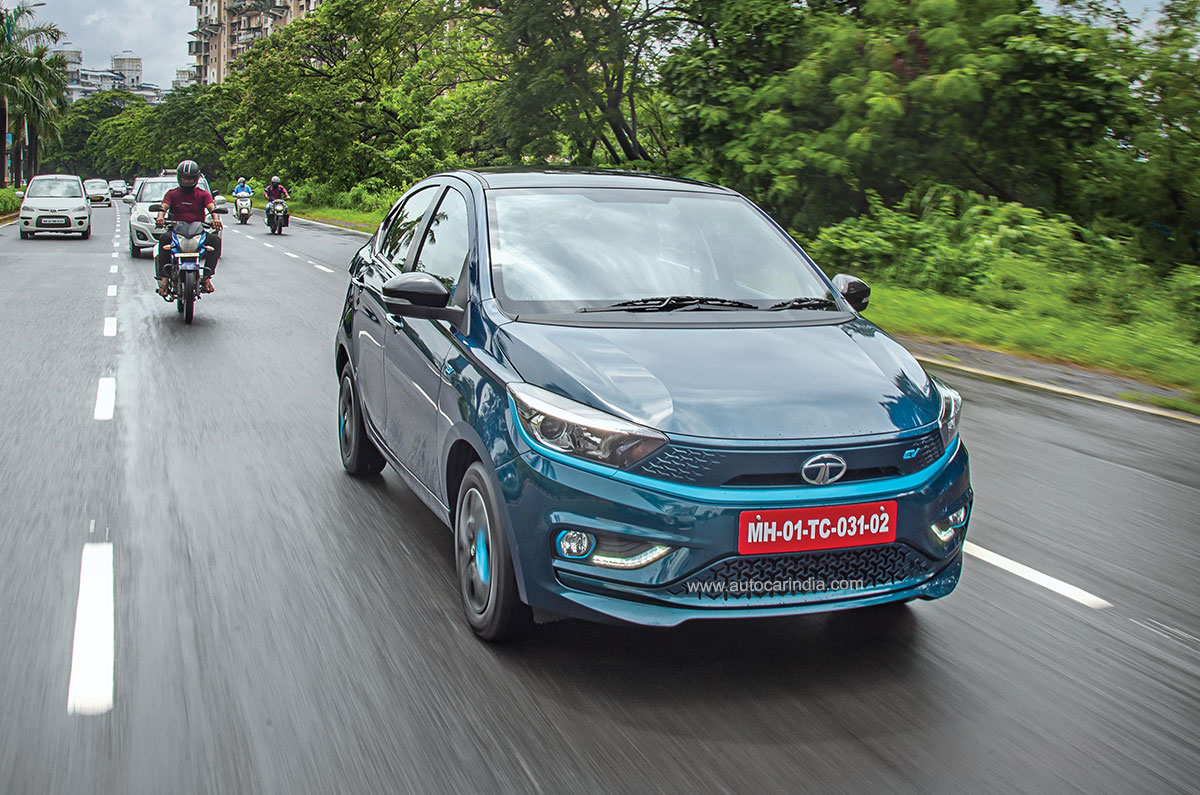The Tigor EV is Tata’s second all-electric vehicle, after the Nexon EV. Tata recently gave the EV a major update, swapping out its older 72V electrical system with its new 350V Ziptron EV system, along with some cosmetic changes. The electric compact sedan is now powered by a 75hp motor generating energy from a 26kWh liquid-cooled battery pack, and it is priced between Rs 11.99 lakh-13.14 lakh (ex-showroom). The company claims that, in an ideal scenario, the Tigor EV manages 306km on a single charge. But how many kilometres will it go on a full charge in the real world? We find out.
- About 128Nm torque in Normal, 170Nm in Sport mode
- Regeneration intensity cannot be adjusted
- Top speed is 116kph (120kph on speedo)
What is the real world range of Tata Tigor EV?

During our tests, we drove the Tigor EV in the default drive setting, with the climate control set to Eco mode. For reference, speeds in the city were capped at 60kph, while those on the highway were maintained between 80kph and 100kph. Like other electric vehicles, the Tigor EV is more efficient in the city than in the highway cycle, due to the frequent stop-go conditions, which results in a greater degree of energy recuperation. In the city, the Tigor EV achieved a battery efficiency of 7.69km per kWh translating into a real-world range of 200km (7.69km/kWh multiplied by 26kWh). In our highway cycle, it managed an efficiency of 6.98km per kWh, translating into a highway range of 181km (6.89km/kWh multiplied by 26kWh) on a full charge.
Analysis of Tata Tigor EV’s range
A point to note is that the motor only produces about 128Nm of its torque in the standard drive mode which limits energy consumption, while switching to Sport mode will deplete the battery quicker (our tests were conducted in the former mode). There is just one regeneration setting, so it decelerates the moment you lift off the accelerator pedal, and because you can’t turn it off, you always need to be on-throttle while cruising or hypermiling (driving in the most efficient way possible), thus it is always consuming energy. Also, its battery doesn’t deplete at a consistent rate – the drop in charge from 100 percent to 95 percent is the quickest, whereas the last 10 percent depletion is the slowest, as the motor’s performance is restricted to maximise range (to enable it to reach the nearest charging station).
Autocar India’s range testing
Before our real-world range test, we fully charge the batteries of our test cars and maintain tyre pressures in accordance with the manufacturer’s recommendation. These cars are driven in fixed city and highway loops and we maintain certain average speeds. To keep a check on any untoward variation, we always have a reference car driving along, one that we’ve already tested in the past; periodic driver swaps further neutralise variations in driver patterns. At the end of each cycle, we calculate the range based on the percentage charge consumed. Throughout our test, there is only one person in each car, running the air con and other electricals like the audio system, indicators and wipers when required, just like how a regular user would. We take pride in our testing data which isn’t merely consistent, but also gives users an accurate indication of what they can expect in the real world.
Also read:
Tata's new electric division to bring in longer-range EVs
Tata Motors secures Rs 7,500 crore investment for new EV subsidiary
Tata Nexon EV real-world range tested, explained


